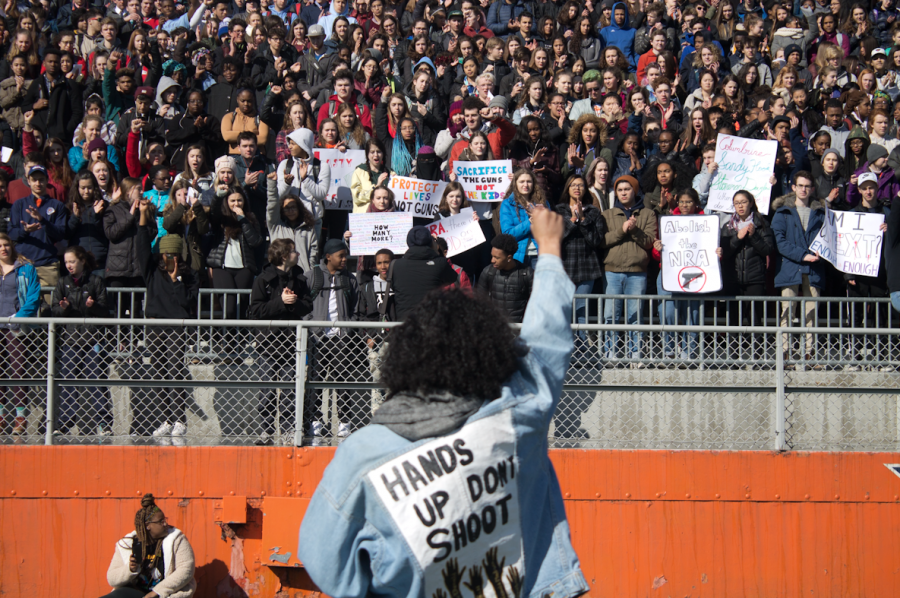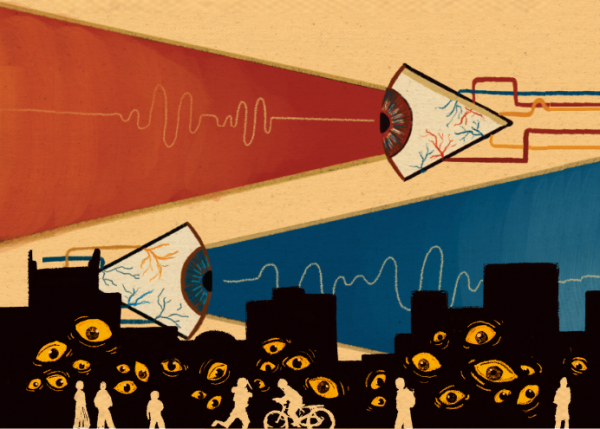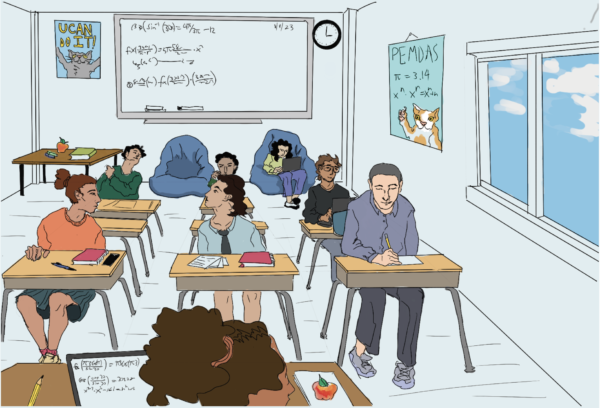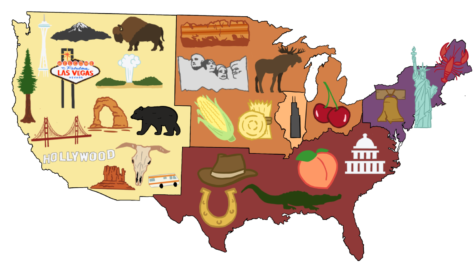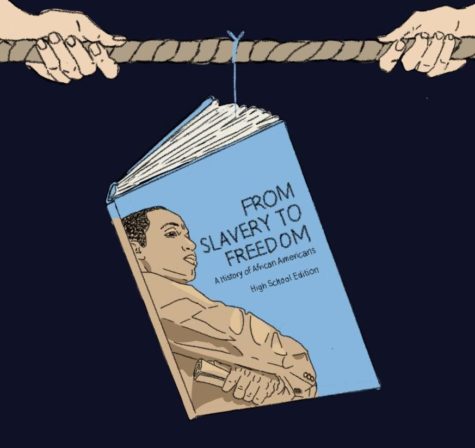Identity contributes to the complexity of safety
Junior Liana Wallace ends her poem about the intersection of gun violence and race by raising her fist.
March 23, 2018
In light of recent school shootings, school safety has become a divisive issue across the country. However, physical security is not the only matter at hand; feeling unsafe in school can have extreme repercussions and yet, an underlying “safety gap” remains among different demographics.
In order to understand who feels safe in the school, it’s important to understand the different types of safety, as safety isn’t just necessarily physical.
“Emotional safety in the classroom is feeling like you’re able to be authentic, so expressing yourself and your ideas without the fear of being targeted,” researcher of Mathematica Policy Research Dr. Johanna Lacoe says.
Perception of safety is sometimes affected by a student’s identity. when a student’s identity is not fully recognized, they might feel less safe in school because they feel that they can’t exist with that identity.
“A lot of kids experience racial microaggressions that can erode the comfort and safety of students,” principal Marcus Campbell says.
“As a person of color it’s pretty impossible to escape microaggressions and stereotypes in and out of class,” freshman Heewon Kim adds. “I think that the subtle jokes and gestures that minimize my culture make me hesitant to put myself out there sometimes.”
Students’ perception of safety can also affect their academic performance. According to Lacoe’s research published in 2013 on the “The Race Gap in School Safety”, students who feel unsafe are more likely to be more stressed and less able to concentrate on schoolwork.
The study goes on to say that these extreme repercussions on students who feel unsafe can explain the racial disparities in academics today; they found that it is more likely for black and Latinx students to feel unsafe in school than white and Asian students and proposes that this is a factor in the differences in academic outcomes among students.
To increase feelings of safety among students of color, ETHS has pushed to implement more summits to ensure that students feel that they have a place in the community.
“Summits are about creating a narrative, a feeling and an existence for students of color,” Campbell says. “We see you, we value what you bring, you’re part of the cultural fabric and we love you.”
Gender and sexuality also plays a role in a students’ feeling of safety, both physically and emotionally.
Certain aspects of gender identity and/or sexuality can make them feel unsafe and for some, this occurs when their identity is assumed or disrespected.
“I don’t think I’ve had a single teacher correctly use my pronouns [this year],” Gender Sexuality Alliance executive board member Safe Kashner says. “This can leave a person feeling as if their identity is being ignored.”
Invalidating an aspect of one’s identity– which happens to some LGBTQIA+ students– can make them feel not safe enough to fully express themselves.
The idea of school safety has made its way into the national conversation. Feeling safe is vital for students to be successful in school, thus it is important to be aware of the various factors that can affect a students’ perception of safety.
One way of going about this, suggests Lacoe, is issuing a schoolwide survey that assesses how safe each student feels within the school.
“A lot of times, the people making policies are just making assumptions. These surveys are helping them make decisions based off real information,” Lacoe says.
She believes that this, along with student leadership and initiative, are what will help schools become a place “where students are welcomed, feel engaged, and are treated fairly.”


